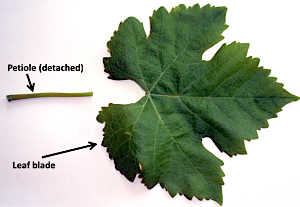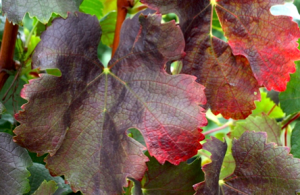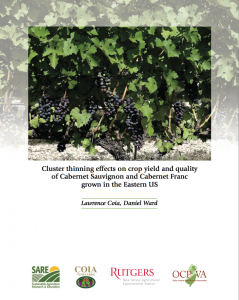Winter injury is a crucial limiting factor to wine grape production in New Jersey (NJ). The lowest recorded temperatures during Jan 21-23, 2025, and Dec 23, 2024, were 0˚F and below at several northern, central, and southern NJ locations (Table 1). These temperatures are below the threshold of causing winter injury to grapevine buds, canes, and even trunks in some cold-tender wine grape varieties. 
This event brought the memory of the 2014 extreme cold when the large mass of arctic cold engulfed most of NJ over many hours with temperatures near and below 0˚F. These low temperatures suddenly dropped from very high temperatures on previous days. Significant damage in multiple wine grape varieties was reported in the survey conducted following that event: https://njvines.rutgers.edu/assessing-winter-cold-injury-in-nj-vineyards/.

Figure 1. Using freezing tolerance model to anticipate potential bud damage in Chardonnay at Central NJ vineyard location.
On a positive note, (1) the lowest temperatures on Dec 23 and Jan 22-23 were not preceded by very high temperatures, and (2) the lows occurred during the maximum cold hardiness of grapevines (mid-Dec to early-Feb). Rapid temperature fluctuations can be very damaging, while gradual temperature decline during the fall and winter helps achieve ideal cold acclimation and maximum cold hardiness. There are newer and better models that predict freezing temperature, e.g., a threshold temperature that can kill 50% of grape bud on the vine.
Figure 1 is an example of using the Cornell Grapevine Freezing Tolerance Program and Prediction Application to determine freezing tolerance at a specific central New Jersey location. This user-friendly interactive application allows one to select the weather station location, select a specific variety to create the chart with max temp (red), min temp (blue), and freezing tolerance model (black) lines. For the selected central NJ location, it is evident that when the lowest temperature reached below 0˚F, the vines’ freezing tolerance temperature also decreased. In general, if the minimum temperature gets within 3-4˚F of the model line, slight damage (5-10%) may have occurred; if it hits the line, expect 30-50% damage; if it goes through the line, expect more than 50%+ damage. In the example below, no or slight bud damage is expected in Chardonnay. However, such models are designed for a mature, healthy grapevine planted at sites with proper cold air drainage. Young or too weak, or too vigorous vines, or at lower spots, may see more damage than predicted by the model. (link https://cornell-tree-fruit-physiology.shinyapps.io/North_America_Grape_Freezing_Tolerance/)
What happens when the grapevine is cold-damaged?
- Death of the fruitful buds: Grapevine compound bud consists of the primary, secondary, and tertiary buds (Figure 2).

Figure 2. Cross section of grapevine compound buds with primary (P), secondary (S), and tertiary (T) buds. A – all three buds are alive; B – P is dead, but S and T are alive; C- all three buds are dead. Photos by Lynn Mills, WSU.
In general, primary buds develop into a new fruitful branch. The secondary buds will break if the primary bud is dead. The clusters from the secondary buds are smaller than the primary buds and can produce 50-80% of the primary bud crop. The tertiary buds are generally non-fruitful and will sprout if the primary and secondary buds are damaged. However, vegetative growth becomes very useful for grapevine health and recovery.
- Development of Crown gall: After the harsh winter, gall development on graft unions, canes, and trunks can be the first visible sign of winter damage. Galls, caused by Agrobacterium around the trunk and graft, damage the vascular system, restricting the movement of water and nutrients in the grapevine. However, waiting for the symptoms to appear may prove counter-productive. Determining that the winter injury has occurred and which part was affected is half of the process of dealing with winter injury.
Assessment of bud damage in the vineyard.
- Vines should be assessed for cold injuries following sub-zero temperatures. Allow at least a day or two before you sample any buds for cross-section. Randomly sample 100 bud-containing nodes throughout the block of a variety and different blocks of the same variety separately. If there is a high variation in the bud damage, sample 100 more buds or reassess how you define sampling block. The bottom 5-6 buds should be inspected for damage, starting from the basal buds. Make the horizontal cuts deep enough so that all three buds are visible. Figure 2 shows green indicates the alive buds, whereas brown indicates the dead buds. If part of the primary bud is green and part brown, consider it a dead bud. Take necessary precautions while using razor-sharp blades for dissection.
- Adjusting the number of retained buds based on primary bud damage is the most effective strategy to achieve a full crop. Prune normally if only 25% or less of primary buds are damaged. Increase the retained buds by 50% if the primary bud mortality is 25- 50%. Increase the retained buds by 50% so the total number of viable buds remains normal. In case of more than 50% of buds are damaged, avoid pruning or hedge up to 6 or more buds, and also bring up multiple suckers to establish future cordon.
Other pruning strategies for avoiding or reducing winter injuries.
- The best time for pruning is after the highest risk of winter damage has passed, typically from the end of Feb to March. This is specifically useful if the cold event occurs towards the end of winter. Unpruned vines can still be assessed for bud injuries, and adjusted for the pruning severity.
- Delayed pruning also delays the bud burst and is a frost avoidance technique. It may not be practical to prune the larger vineyard just before the green tip stage. In that case, an option is double pruning, where a rough pruning atop 6-8 buds during the winter and then fine pruning at around bud swell is performed. However, start pruning the hardest cultivar first and finish with the least hardy.
- Balanced vines, neither vigorous nor weak, will have less winter damage than un-balanced vines. Canopy management can achieve balanced vines, starting from the winter pruning.
- Choosing the right location for planting grapevines is the most effective strategy. Avoid cold pockets or low spots where cold air will likely drain and accumulate. Weed-free stripes and low mowing between isles, which facilitate cold air drainage, are helpful tools.
- Selecting cold, hardy varieties or planting cold-tender varieties at the higher elevation and cold-resistant or hybrid varieties at the low spots avoids the problem.
- Retaining two or more trunks for cold-tender or young vines should be standard practice.
- Hilling up the graft union works as an insulation that protects the graft union from cold damage. Factsheet FS1264 https://njaes.rutgers.edu/fs1264/details the essential aspects of hilling-up. The grapevines with multiple trunks and hilled-up are even less likely to suffer winter injuries than just retaining more trunks or just hilling-up.
References
- Centinari M. 2016. What is going on in your vineyard right now? PSU Extension Wine and Grape U.
- Fiola J. 2021. Assessing Grapevine Bud Damage. Timely Viticulture. https://extension.umd.edu/resource/assessing-grapevine-bud-damage/Timely Viticulture.
- Ker K and Brewster R. 2011. Strategies to recover from Winter Damage. KCMS Applied Research and Consulting.
- Moyer M, Mills L, and Keller M. 2011. Assessing and Managing Cold Damage in Washington Vineyards. Washington State University Publication EM042E.
- Zabadal TJ, Dami IE, Goiffnet MC, Martinson TE, and Chien MC. 2007. Winter Injuries to Grapevines and Methods of Protection. Extension Bulletin E2930. Michigan State University Extension.
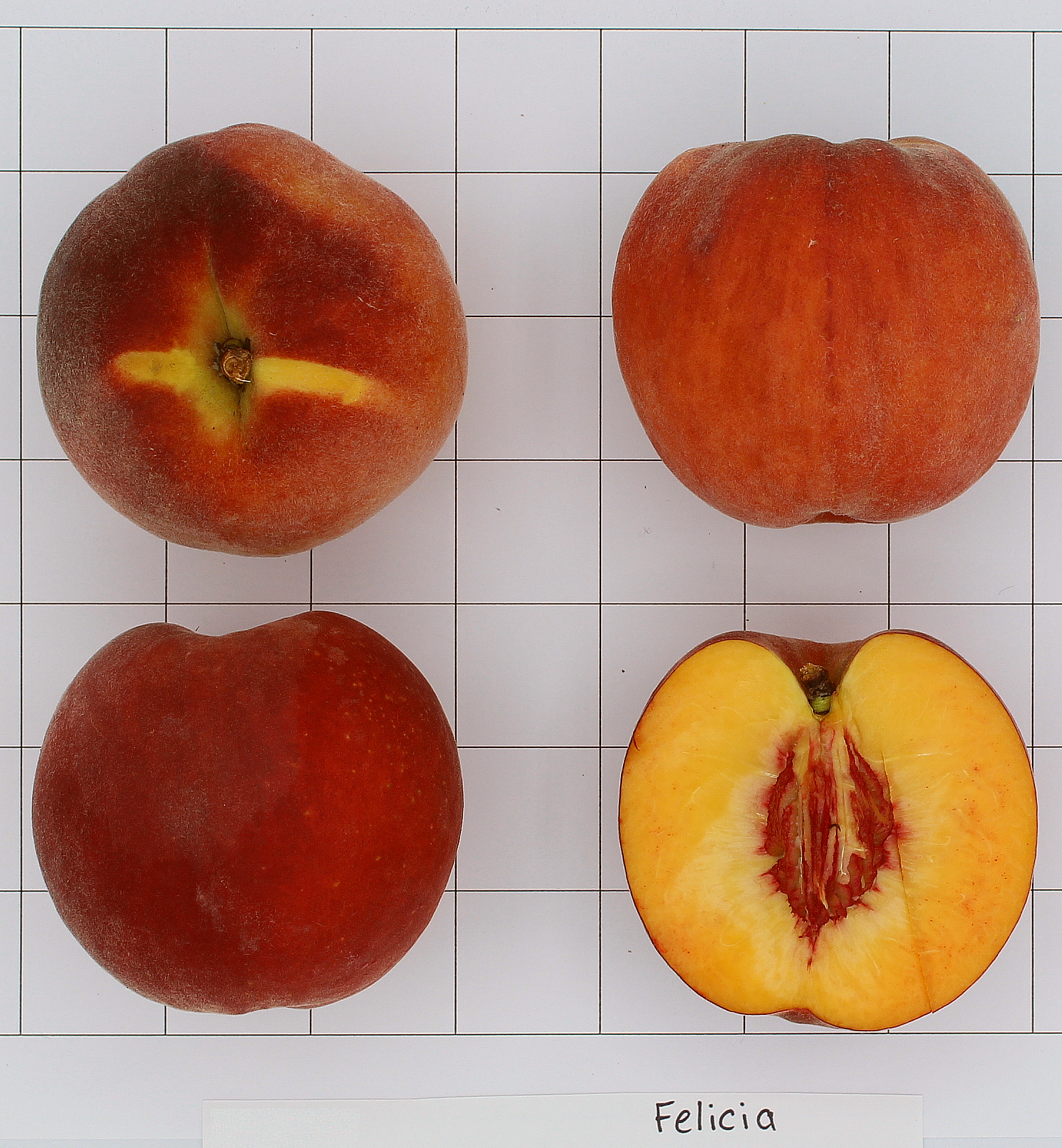
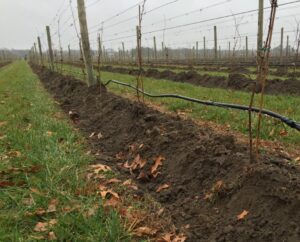 The principle of Hilling-up – How the soil works, both as a thermal mass that holds the heat and an insulator that slows heat loss.
The principle of Hilling-up – How the soil works, both as a thermal mass that holds the heat and an insulator that slows heat loss.